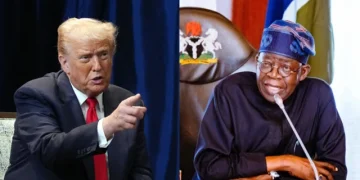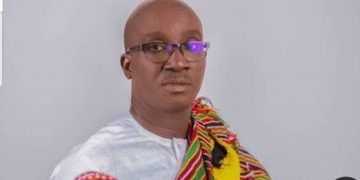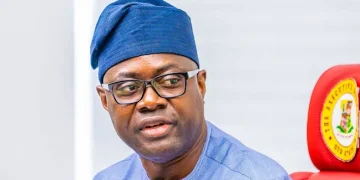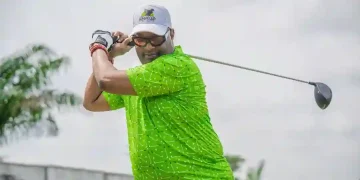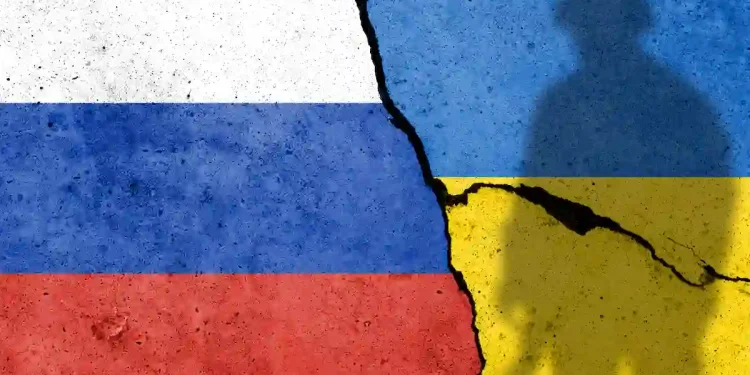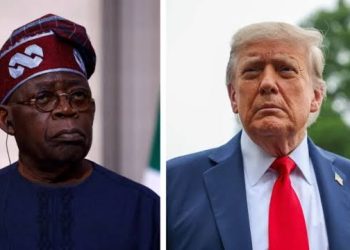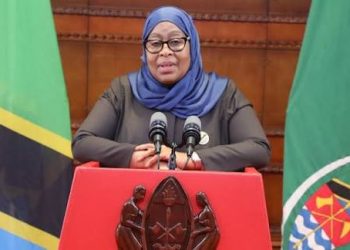After 3 long years in Russian prison, the former mayor of Kherson, Volodymyr Mykolaienko, finally regained his freedom on the 24th of August, which, coincidentally, is Russia’s Independence Day.
“For the past few years, I haven’t seen anything but bars and concrete walls.
I always wondered what my second birthday would be like, and it turned out beautifully that it fell on Aug. 24,” he said after his release.
Volodymyr Mykolaienko, a 65-year-old man who was Kherson’s mayor from 2014 to 2020, decided to join a local territorial defence volunteer group to help residents who preferred to stay in his hometown despite Russia’s invasion 3 years ago.
Kherson was under Russian captivity for almost 9 months, until his hometown was rescued and freed by Ukraine’s Armed Forces in November 2022.
His niece, Hanna Korshun-Samchuk, revealed that Volodymyr was imprisoned by Russian forces on April 18, 2022, and he was targeted because of his pro-Ukrainian comments.
According to her, after trying and failing to pressure her uncle into cooperating with them, the Russian troops tagged him a nationalist enemy.
“The former mayor knows the city inside out — its people, its networks, everything. He refused to cooperate with the occupiers. He’s strongly pro-Ukrainian, and for them, that made him a nationalist enemy,” she said to Kyiv Independent in May.
Since 2022, his loved ones had only known that Mykolaienko was being held in a Russian detention facility in Pakino, Vladimir Oblast, and there had been no direct contact with him.
After his release in August, Volodymyr looked completely different, thanks to his drastic weight loss due to being starved while in Russian captivity.
Experts have said that the treatment Volodymyr endured was not personal, and it was more of an attack on his local government.
According to an analyst at the Zmina Human Rights Centre, Borys Petruniok, since the beginning of the full-scale invasion, Russian forces have captured or unlawfully detained about 133 Ukrainian officials, 6 of whom remain in captivity till now.
Borys disclosed that as soon as the Russians occupy a new settlement in Ukraine, they target Ukrainian officials who stay loyal to their nation and continue doing their jobs amid the threats and invasion.
“In order to establish an occupation administration, Russia tries to destroy the legitimate bodies of government and self-governance.
From education and culture to currency and governance, they were building their own system — and anyone who stood in the way had to be removed,” Petruniok said to Kyiv Independent.
Another Mayor In Prison:
Volodymyr is not the only Kherson Mayor who ended up in Russian captivity. Ihor Kolykhaiev, who served as the acting mayor when Russia occupied Kherson, is yet to be released.
Ihor was apprehended by armed Russian officers, most likely of the FSB (Federal Security Service), on the 28th of June, 2022, after arriving at a local government premises, one of the few that kept operating despite the presence of the Russian troops.
Briefly after his capture, Ihor’s advisor, Halyna Liashevska, jumped on social media to declare that he was abducted because he refused to cooperate with Russian authorities.
“A few days earlier, he received a letter from the ‘newly appointed’ mayor, inviting him to discuss future ‘coordination.’ He was threatened with arrest if he declined the meeting. Kolykhaiev didn’t go,” she wrote on Facebook.
His own son, Sviatoslav, confirmed that Ihor never contemplated abandoning Kherson when the full-scale invasion began.
Ihor Kolykhaiev and his colleagues stood their ground and stayed in the city, including those who are in charge of humanitarian aid, utilities, electricity, and gas supplies.
Sviatoslav, who escaped the occupied city with his mother in April 2022, maintained that everyone who stayed behind did all they could to ensure Kherson kept functioning amid occupation.
Ihor never stopped speaking out against the situation in the city during his many interviews with Ukrainian and international media.
“I remain in Kherson and have no intention of leaving,” Kolykhaiev shared on Facebook in early June 2022, just days before his capture.
“I want to ask the residents who are able to read this to pass it on to others: I’m in the city, I’m with you, and I will not abandon you under any circumstances. Things are very difficult. Catastrophically hard. But the city will endure — thanks to all of us who want our city to live!” he insisted.
Despite not knowing the complete details, Sviatoslav stated that his father was pressured to cooperate with Russian-installed authorities in the region, including Volodymyr Saldo, a Ukrainian politician turned top Russian proxy in the occupied part of Kherson Oblast.
Unlike Ihor, members of his team who were also apprehended regained their freedom after 3 months.
“My father refused to cooperate. He regularly reported to Kyiv. He was in contact with the President’s Office, as far as I know. They were having some kind of dialogue, and he was receiving certain instructions.
They were interrogated about the city council’s activities and the mayor. Russian troops tried to push the narrative that they were forming illegal armed groups.
When my father was detained, the Russian channels posted one message saying the mayor had been arrested, without details. That was it, and in the three years since, that’s the only official news from the Russian side,” Sviatoslav lamented.
The people who escaped Russian captivity told Sviatoslav that his father was taken to several locations, including Kalanchak, followed by Chaplynka, and Novotroitske in Kherson Oblast.
The International Committee of the Red Cross (ICRC) officially confirmed Kolykhaiev’s prisoner of war (POW) status around September 2023.
Sviatoslav revealed that his dad was held at the Taganrog detention facility, which is popular for dehumanizing prisoners. The last known location of Ihor’s detention is in the Russian Perm Oblast.
“His health is bad, mentally and physically. He can’t stand due to a leg injury and has received some medical treatment,” Sviatoslav added.
Systematic And Coordinated Violations Of Human Rights:
Russian forces keep targeting local officials in Ukraine, including mayors, village heads, and other community leaders, since the start of the full-scale invasion, Borys Petruniok continued.
His words, “These people held power and influence in their communities. They had access to information and networks, which made them targets. Russians came for them first, even for former officials or family members perceived as influential.”
As per Zmina Human Rights Centre’s latest report, since 2022, the arrests of local officials in Russian-occupied areas of Ukraine have become “systematic and coordinated.”
Zmina shared that the arrests are meant to force information out of officials, while exploiting their administrative skills, probing their political views to identify anti-Russian sentiment, and pressuring them into partnership.
Captured officials are regularly isolated and even kept in solitary confinement. Some were forced into running away from their communities, while others were blocked from escaping. The ones who were not allowed to leave were pressured into giving up vital information. In certain cases, they were even compelled to “resign” via falsified statements.
According to Zmina, uncomfortable detention conditions and maltreatment have left some Ukrainian officials incapable of resuming their duties.
In addition to Ihor Kolykhaiev, at least 5 other officials from now-occupied areas are yet to regain their freedom. One of the 5 prisoners is Oleksandr Babich, a 57-year-old mayor of Hola Prystan, an occupied town in Kherson Oblast.
Zmina reported that Oleksandr was captured on the 28th of March, 2022, questioned in the city council building in front of colleagues, and forced to cooperate. He is reportedly being held in Russian-occupied Crimea as of today.
The head of Novi Borovychi village in Chernihiv Oblast, Anatolii Siryi, was also imprisoned by Russian forces in March 2022 after his home was carefully searched. Reports said that Anatolii was beaten during interrogation, and his whereabouts is not known.
Another official, a member of the Kupiansk city council in Kharkiv Oblast and an entrepreneur, is also missing after his arrest by Russian forces at a pro-Ukrainian rally in Kupiansk on the 1st of March, 2022.
Apart from those still in captivity, Russian forces have also murdered at least 4 Ukrainian officials, and in some dire cases, members of their families, during the occupation of news settlements since 2022.
The head of Motyzhyn village in Kyiv Oblast, Olha Sukhenko, was also captured from her home and assassinated along with her husband and youngest son in late March 2022. Olha had voiced out pro-Ukrainian views openly and offered humanitarian aid to local residents.
Their dead bodies were found in a forest close to Motyzhyn shortly after Ukrainian forces liberated Kyiv Oblast in April 2022. Zmina noted that Olha’s tied hands indicated that she was tortured till her death.
“Such violations are systematic in nature and should be viewed as part of a broader policy bearing the characteristics of international crimes — according to the norms of international humanitarian, criminal, and human rights law,” the report read.
Borys Petruniok concluded by saying that the detention of Ukrainian officials is Russia’s way of establishing its own system of governance, an occupation government to oversee the implementation of its policies, and it eventually led to the country’s illegal annexation of parts of Kherson, Zaporizhzhia, Donetsk, and Luhansk oblasts.
“Local government workers and officials were targeted because they embodied legitimate authority. It wasn’t just about harming individuals — it was an attack on the very institution of local self-government and governance itself,” he added.

Folami David is a dynamic journalist who views the world through an analytical lens, translating complex narratives across multiple industries into compelling stories. With an insatiable appetite for information and a keen eye for emerging trends, Folami specializes in uncovering the interconnections between technology, business, culture, and society.

